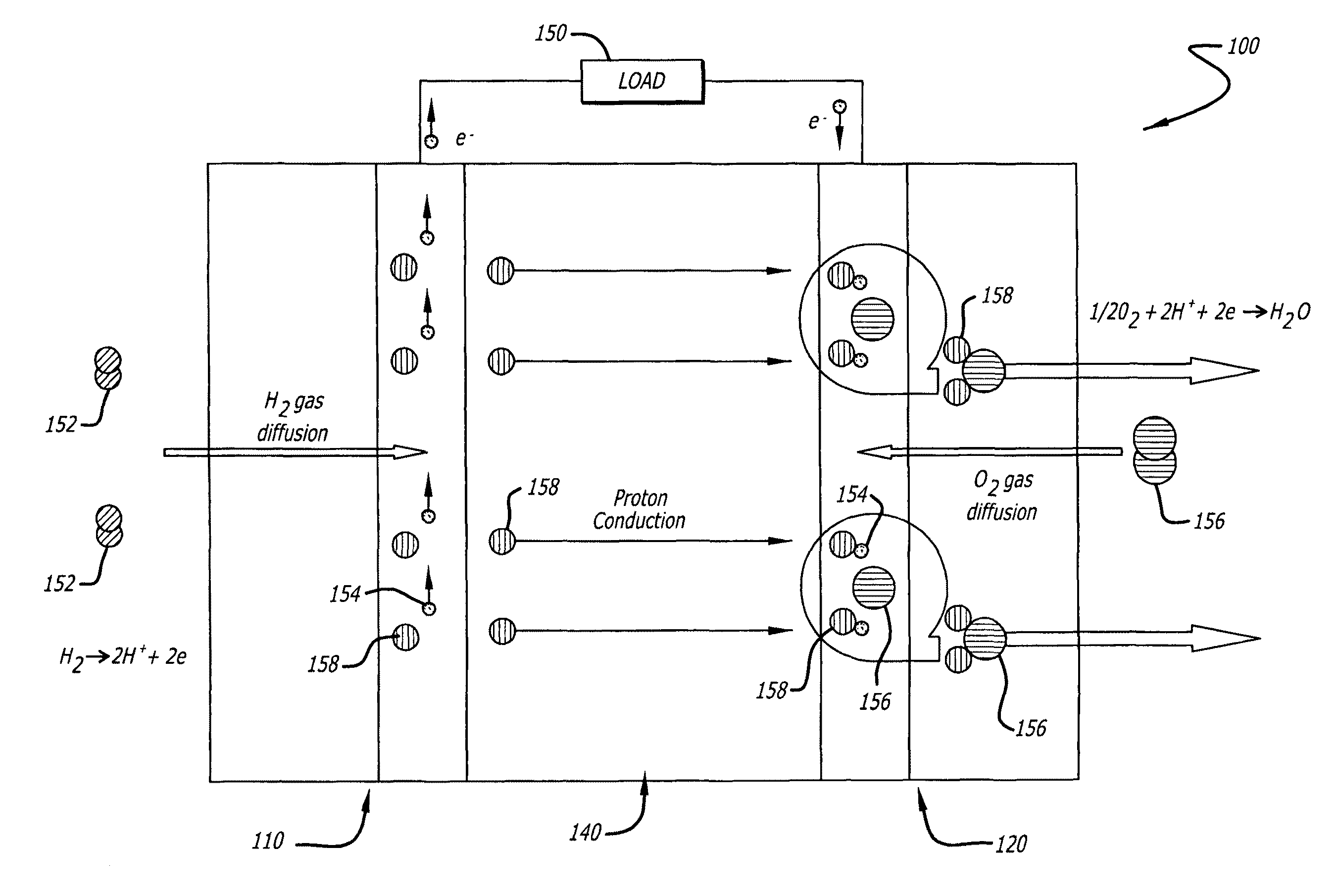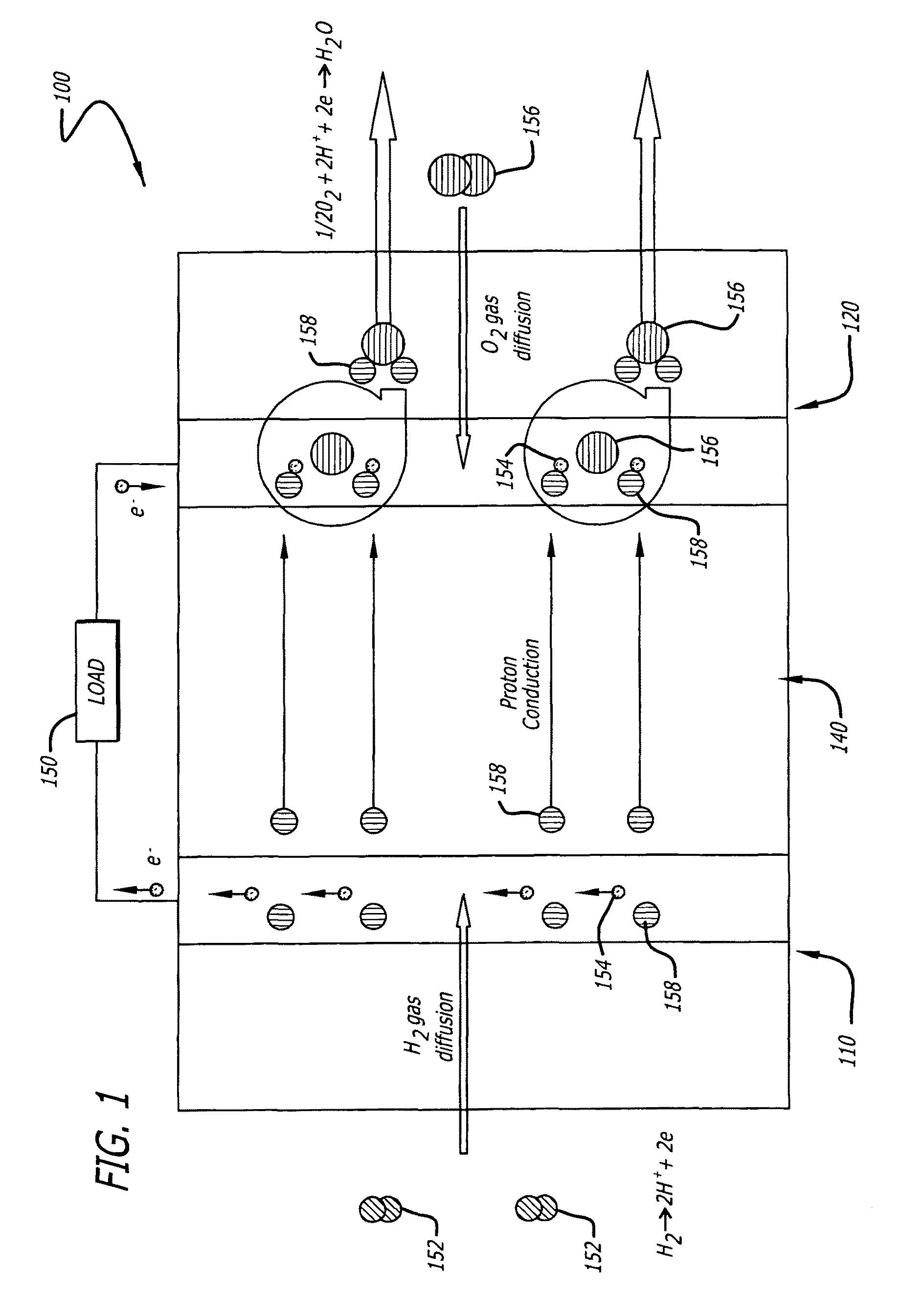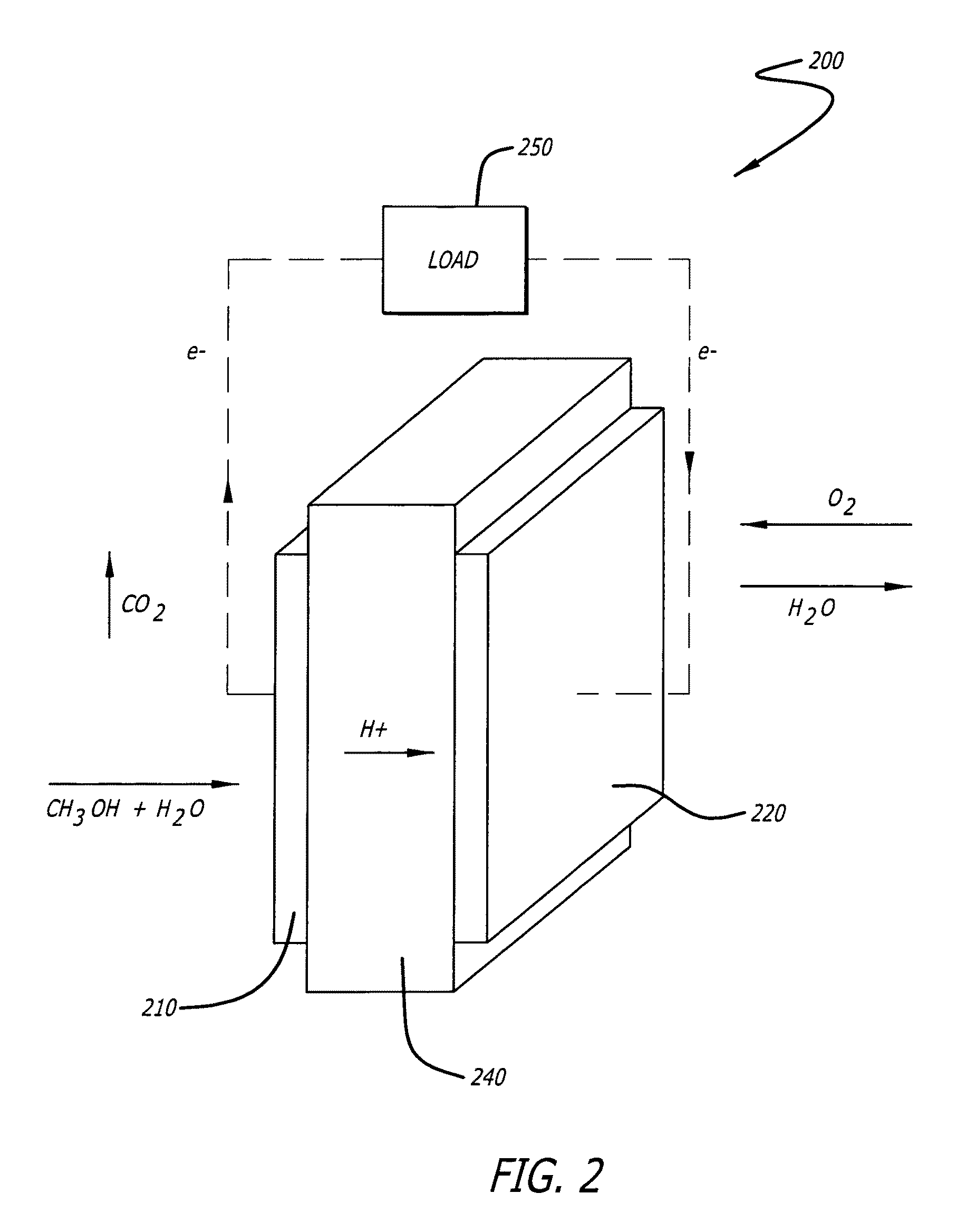Platinum and platinum based alloy nanotubes as electrocatalysts for fuel cells
a fuel cell and alloy nanotube technology, applied in the direction of cell components, physical/chemical process catalysts, other chemical processes, etc., can solve the problems of low activity, poor utilization and durability of anode and cathode catalysts, and considerable technical challenges. achieve the effect of increasing charge and mass transportation
- Summary
- Abstract
- Description
- Claims
- Application Information
AI Technical Summary
Benefits of technology
Problems solved by technology
Method used
Image
Examples
Embodiment Construction
[0065]Electrocatalyst durability has been recently recognized as one of the most important issues that have to be addressed before the commercialization of the proton exchange membrane fuel cells (PEMFCs). The durability problem is particularly severe in the cathode where the oxygen reduction reaction (ORR) occurs. At present, the most widely used cathode catalyst system is platinum (Pt) in the form of small nanoparticles two to five nanometers (nm) supported on amorphous carbon particle aggregates (Pt / C). The poor durability of the Pt / C catalyst is reflected by a fast and significant loss of platinum electrochemical surface area (ECSA) over time during fuel cell operation. The mechanisms for the loss of platinum ECSA at the cathode have been discussed and can be summarized as follows: (i) loss of platinum nanoparticles from the electrical contact due to the carbon support corrosion, (ii) platinum dissolution and re-deposition or Ostwald ripening of the platinum nanoparticles, (iii)...
PUM
| Property | Measurement | Unit |
|---|---|---|
| thickness | aaaaa | aaaaa |
| outer diameter | aaaaa | aaaaa |
| length | aaaaa | aaaaa |
Abstract
Description
Claims
Application Information
 Login to View More
Login to View More - R&D
- Intellectual Property
- Life Sciences
- Materials
- Tech Scout
- Unparalleled Data Quality
- Higher Quality Content
- 60% Fewer Hallucinations
Browse by: Latest US Patents, China's latest patents, Technical Efficacy Thesaurus, Application Domain, Technology Topic, Popular Technical Reports.
© 2025 PatSnap. All rights reserved.Legal|Privacy policy|Modern Slavery Act Transparency Statement|Sitemap|About US| Contact US: help@patsnap.com



